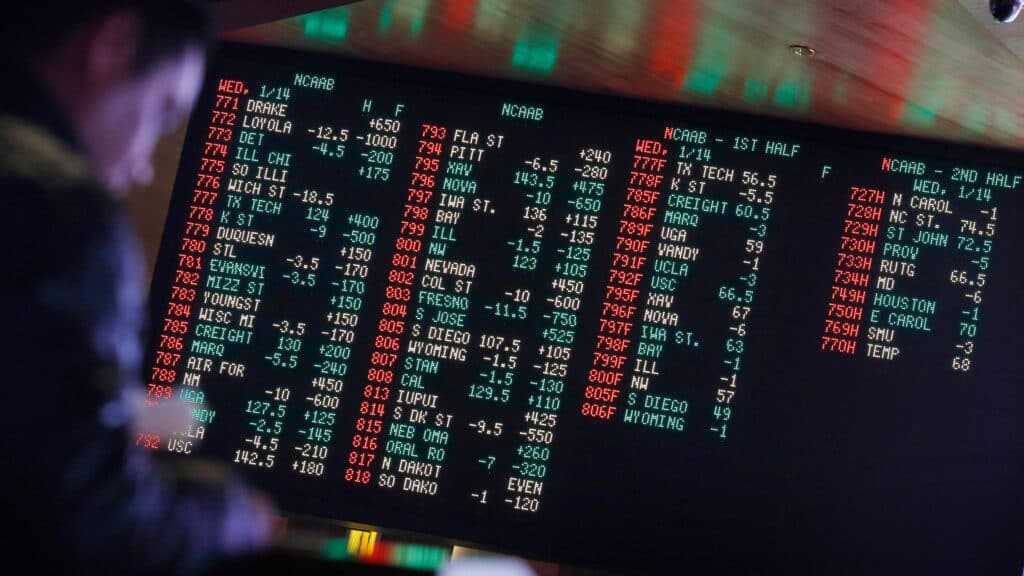Online horse racing variants have undergone a significant evolution, mirroring the technological advancements and shifting preferences within the gambling industry. From traditional bookmaker setups to sophisticated online platforms, the thrill of horse racing has seamlessly transitioned into the digital realm, bringing with it a diverse array of wagering opportunities and game formats appealing to both novice and seasoned gamblers.
The Digital Transformation of Horse Racing
The history of horse racing is deeply rooted in tradition, with its origins stretching back centuries. For many years, placing bets on races meant physically going to a racetrack or a licensed bookmaker. The advent of the internet and online gambling platforms marked a monumental shift, revolutionizing how people engage with horse racing. This digital transformation has not only expanded accessibility but also introduced a plethora of online horse racing variants, enhancing the excitement and wagering possibilities for a global audience.
Early Stages of Online Horse Racing
The initial foray of horse racing into the online sphere was relatively basic. Early online platforms primarily focused on replicating traditional racetrack betting. These platforms offered digital versions of standard win, place, and show bets, allowing users to wager on real-life races from the comfort of their homes. The convenience factor was a major draw, eliminating the need for physical presence at racetracks and broadening the appeal to individuals who might not have had easy access to such venues.
Rise of Advanced Betting Platforms
As technology evolved, so did online horse racing platforms. Advancements in streaming technology allowed for live race broadcasts to be integrated directly into betting interfaces. This real-time access heightened the engagement and immediacy of online horse racing, mirroring the live racetrack experience more closely. Simultaneously, platforms began incorporating more complex betting options beyond the basic win, place, and show. Exotic wagers like exactas, trifectas, and superfectas, which involve predicting the order of finish for multiple horses, became increasingly prominent online, offering the potential for significantly higher payouts and attracting a more strategic gambler.
Popular Online Horse Racing Variants
The online space has fostered the creation and popularization of numerous horse racing variants, each offering unique gameplay and betting structures. These variants cater to diverse preferences, ensuring there's something for every type of gambler, from those seeking straightforward bets to those desiring intricate, high-stakes wagering.
Traditional Bets in Online Format
The cornerstone of horse racing betting, traditional bets, are fully available and widely utilized in the online environment. These include:
- Win: Betting on a horse to finish first. This is the simplest and most popular bet, especially among new gamblers.
- Place: Wagering on a horse to finish either first or second. Place bets offer slightly better odds than win bets, acknowledging the higher probability of success.
- Show: Betting on a horse to finish first, second, or third. Show bets provide the highest probability of winning among the traditional bets, but typically come with the lowest payouts.
Online platforms often provide enhanced information and tools for traditional betting, such as real-time odds updates, horse statistics, jockey and trainer information, and expert analysis, empowering gamblers to make more informed wagering decisions.
Exotic Wagers: Higher Stakes, Higher Rewards
Exotic wagers significantly amplify the excitement and potential payouts in online horse racing. These bets require predicting the outcome of multiple horses within a single race or across several races:
- Exacta: Predicting the first and second place finishers in the correct order. Exactas are more challenging than traditional bets and offer correspondingly higher payouts.
- Trifecta: Requires correctly predicting the first, second, and third place finishers in exact order. Trifectas substantially increase the difficulty and potential reward, attracting gamblers seeking larger wins.
- Superfecta: Predicting the first, second, third, and fourth place finishers in the correct order. Superfectas represent the pinnacle of exotic wagering complexity, offering the highest risk and the potential for very substantial payouts.
- Daily Double: Betting on the winners of two consecutive races. Daily Doubles extend the betting horizon beyond a single race, adding a layer of strategic planning.
- Pick 3, Pick 4, Pick 6: These wagers involve predicting the winners of multiple consecutive races (three, four, or six, respectively). "Pick" bets are notoriously difficult to win but offer the allure of jackpot-sized payouts, often accumulating large pools, especially in Pick 6 wagers.
Online platforms often feature tools to assist with exotic wagering, such as "boxed" bets (allowing the selected horses to finish in any order within the predicted positions) and "wheeled" bets (using a key horse to finish in a specific position while combining multiple horses for the other positions), which can improve a gambler's chances, albeit at a higher cost.
Virtual Horse Racing: Speed and Accessibility
A purely digital variant, virtual horse racing, has gained considerable traction online. This format utilizes computer-generated races, typically simulated with high-quality graphics and realistic race conditions. Key characteristics of virtual horse racing include:
- 24/7 Availability: Virtual races run continuously, 24 hours a day, 7 days a week, offering constant betting opportunities, unlike real-life races that are scheduled.
- Rapid Race Cycles: Races are typically very short, often lasting only a few minutes from start to finish, allowing for quick betting cycles and immediate results.
- Random Number Generation (RNG): Outcomes are determined by RNGs, ensuring fairness and unpredictability, though this also removes elements of real-world horse racing like horse form and jockey skill.
- Simplified Betting: Virtual horse racing often focuses on simpler bet types like win, place, and show, making it accessible for beginners and those seeking fast-paced action.
Virtual horse racing provides a convenient and fast-paced alternative for gamblers seeking immediate gratification and continuous betting opportunities, particularly outside of real-world race schedules.
Fantasy Horse Racing: Skill and Strategy
Fantasy horse racing brings a skill-based dimension to online horse racing variants. Drawing inspiration from fantasy sports, this format involves users drafting virtual stables of horses and earning points based on their real-world race performances.
- Drafting and Team Management: Users select horses to create their fantasy stables, often within a salary cap, requiring strategic selection and team management skills.
- Points-Based System: Points are awarded based on the real-world performance of the drafted horses (winning, placing, showing in actual races).
- League and Tournament Formats: Fantasy horse racing often features leagues and tournaments with varying entry fees and prize pools, fostering competition among players.
- Season-Long and Daily Options: Formats range from season-long leagues requiring sustained engagement to daily fantasy contests offering quicker competitions.
Fantasy horse racing appeals to gamblers who enjoy strategic team building, horse racing knowledge application, and competing against other players in a skill-based environment, moving beyond pure chance wagering.
Technological Innovations Driving Evolution
Several technological advancements have been instrumental in shaping the evolution of online horse racing variants, enhancing user experience, and expanding the scope of possibilities.
Live Streaming and Real-Time Data
High-quality live streaming has revolutionized online horse racing by bringing the racetrack experience directly to users' devices. Real-time video feeds of races, coupled with instant data updates on odds, horse positions, and race statistics, create an immersive and engaging betting environment. This technology is crucial for maintaining gambler engagement and providing the immediacy expected in modern online gambling.
Mobile Betting Platforms
The proliferation of smartphones and mobile internet access has driven the development of sophisticated mobile betting platforms. Mobile apps and optimized websites allow gamblers to place bets, watch live races, and manage their accounts from anywhere with an internet connection. Mobile accessibility has significantly expanded the reach of online horse racing, making it convenient for on-the-go wagering and broadening the demographic of participants.
Advanced Algorithms and RNGs
Advanced algorithms and Random Number Generators (RNGs) are fundamental to virtual horse racing and crucial for ensuring fairness and unpredictability in these digital simulations. RNGs guarantee that virtual race outcomes are random and unbiased, mimicking the uncertainty of real horse races. Sophisticated algorithms can also simulate various race conditions, horse attributes, and jockey styles to create a more realistic and engaging virtual racing experience.
Blockchain and Cryptocurrency Integration
Emerging technologies like blockchain and cryptocurrencies are beginning to influence online horse racing. Blockchain technology can enhance transparency and security in betting transactions, potentially creating provably fair betting systems. Cryptocurrency integration offers faster and potentially cheaper payment options, appealing to a digitally savvy demographic. While still in relatively early stages of adoption in mainstream online horse racing, these technologies hold promise for future innovations.
Psychological and Strategic Aspects of Online Horse Racing Variants
Engaging with online horse racing variants involves both psychological and strategic dimensions. Understanding these aspects can help gamblers approach online horse racing in a more informed and responsible manner.
Understanding Odds and Payouts
A fundamental aspect of successful online horse racing gambling is a solid understanding of odds and payouts. Different bet types come with varying odds, reflecting the probability of winning and influencing potential payouts. Learning to interpret odds formats (fractional, decimal, moneyline) and calculating implied probabilities is crucial for making informed betting decisions. Comparing odds across different platforms can also be a strategic advantage, as some platforms may offer more favorable odds on certain races or bet types.
Bankroll Management and Responsible Gambling
Effective bankroll management is paramount for sustainable and responsible online horse racing gambling. Setting a budget, adhering to staking plans (determining how much to bet per race), and avoiding chasing losses are essential practices. Online platforms often provide tools to promote responsible gambling, such as deposit limits, spending trackers, and self-exclusion options. Utilizing these tools and maintaining a disciplined approach are crucial for mitigating risks and ensuring gambling remains an enjoyable form of entertainment rather than a financial problem.
Developing Betting Strategies
While chance plays a significant role in horse racing outcomes, developing and applying betting strategies can enhance a gambler's approach, particularly in complex variants like exotic wagers and fantasy horse racing. Strategies may involve:
- Handicapping: Analyzing horse form, past performances, jockey/trainer statistics, track conditions, and speed figures to assess a horse's probability of winning.
- Identifying Value Bets: Seeking out bets where the perceived probability of an outcome is higher than the implied probability suggested by the odds offered by the platform.
- Specialization: Focusing on specific race types, tracks, or bet variants to develop deeper expertise and improve decision-making.
- Utilizing Betting Systems: Employing structured betting systems (like progressive staking plans) cautiously, understanding that no system can guarantee profits in gambling.
Strategy development in fantasy horse racing involves horse selection algorithms, understanding scoring systems, and player performance analysis. Continuous learning and adaptation are key to refining betting strategies in the dynamic environment of online horse racing.
The Future of Online Horse Racing Variants
The evolution of online horse racing variants is ongoing, driven by technological innovation and changing consumer preferences. Several trends suggest potential future directions:
Enhanced Personalization and Gamification
Future platforms may offer increasingly personalized experiences, tailoring race recommendations, betting options, and platform interfaces to individual user preferences and betting patterns. Gamification elements, such as loyalty programs, leaderboards, and social betting features, could further enhance engagement and create more interactive online horse racing communities.
Integration of Virtual Reality (VR) and Augmented Reality (AR)
VR and AR technologies hold the potential to revolutionize online horse racing by creating truly immersive and interactive experiences. VR could transport gamblers to virtual racetracks, allowing them to experience the sights and sounds of live racing from their homes. AR applications might overlay real-time race data and betting information onto live race broadcasts viewed through mobile devices, enhancing data accessibility and engagement.
Expansion of Esports and Skill-Based Horse Racing Games
The lines between traditional gambling and esports may continue to blur, with the development of more skill-based online horse racing games. These could involve horse racing simulations where player skill and strategy directly influence virtual race outcomes, moving beyond RNG-dependent virtual races and fantasy formats. This evolution could attract a new demographic of gamers and esports enthusiasts to online horse racing.
Increased Focus on Responsible Gambling Technologies
As online gambling continues to grow, there will be an increasing emphasis on responsible gambling technologies and practices. Future platforms may incorporate more sophisticated AI-driven tools for detecting and preventing problem gambling behaviors, offering proactive interventions and personalized responsible gambling support resources. Enhanced age verification and stricter regulatory compliance will also likely be central to the future of online horse racing.
Conclusion
Online horse racing variants have evolved dramatically, transforming from basic digital adaptations of traditional betting to a diverse ecosystem of wagering options, game formats, and technology-driven experiences. This evolution has broadened accessibility, enhanced engagement, and catered to a wide spectrum of gambler preferences. From traditional and exotic wagers to virtual and fantasy formats, online platforms offer a dynamic and exciting world of horse racing gambling. As technology continues to advance, the future of online horse racing variants promises even greater innovation, personalization, and immersive experiences, further solidifying its place in the online gambling landscape. For gamblers, understanding the nuances of these variants, employing strategic approaches, and practicing responsible gambling are key to navigating and enjoying this ever-evolving digital frontier of horse racing.
External Resources:



